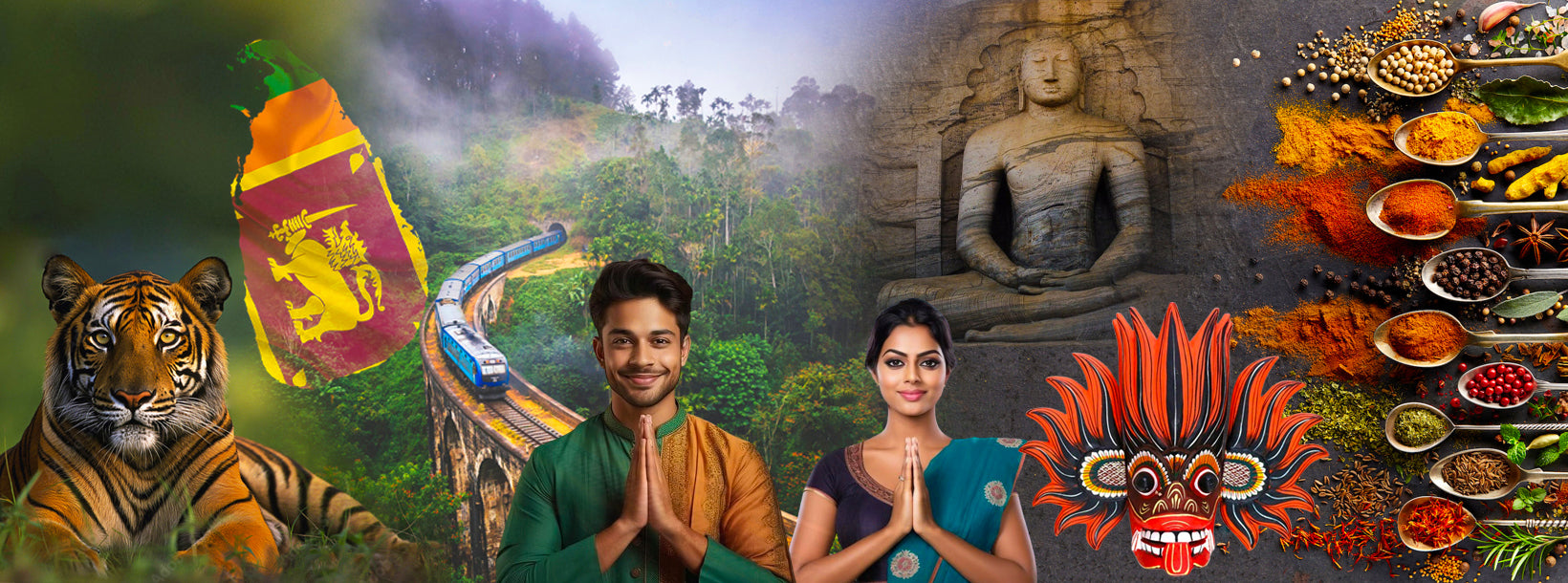
스리랑카
남아시아의 섬나라 스리랑카는 풍부한 문화 유산, 다채로운 자연 경관, 그리고 야생 동물로 유명합니다. 유서 깊은 사원, 깨끗한 해변, 울창한 차 농장, 그리고 활기 넘치는 축제 등 다채로운 매력을 자랑합니다. 스리랑카만의 독특한 문화, 따뜻한 환대, 그리고 맛있는 요리는 여행객들에게 매력적인 여행지로 자리매김합니다.
The original inhabitants of Lankas Yakkas & Nagas
The original inhabitants of Sri Lanka, often referred to as Yakkas, Rakshasas, and Nagas, are an integral part of the island’s early history and cultural heritage. These indigenous groups were present on the island long before the arrival of Prince Vijaya and his companions, who are credited with initiating the first known colonization by an external group.
The Yakkas, commonly associated with "demon-worshippers," were not supernatural beings as their mythical portrayal might suggest. Instead, they were believed to be a totemic tribe with their own customs, beliefs, and social structures. Their reverence for nature and ancestral spirits often led later cultures to associate them with demonic practices, though these associations were more likely rooted in misunderstandings and myths rather than actual practices.
The Rakshasas were another indigenous group, often referenced alongside the Yakkas in Sri Lankan legends. Although the term "Rakshasa" often carries connotations of demon-like beings in South Asian mythology, in this context, it likely refers to another early tribe with distinct customs, possibly similar in nature to the Yakkas but with unique cultural practices and beliefs.
The Nagas, or "snake-worshippers," were a third prominent group among the early inhabitants. The term "Naga" has historical ties to snake veneration, a practice that was prevalent in various ancient cultures, including those in South Asia. In Sri Lanka, the Nagas primarily settled around the regions of Kelaniya and the northern peninsula. Nagadeepa (modern-day Nainathivu) was a notable settlement of the Naga people and remains a site of religious and cultural significance. Interestingly, Nagadeepa was originally an island off the peninsula but was connected to the mainland by a causeway about 30 years ago, symbolizing the enduring connection between the land and its people.
Notably, the Nagas were not unique to Sri Lanka. In northeastern India, there exists a state called Nagaland, which is home to the Naga people, an ethnic group that shares a cultural affinity with the ancient Nagas of Sri Lanka. This connection between the two regions underscores the shared cultural and historical ties among ancient civilizations across South Asia, with a common thread of totemic beliefs, especially the reverence of snakes.
These early tribes of Sri Lanka, the Yakkas, Rakshasas, and Nagas, were not supernatural beings as mythology might suggest, but indigenous communities with deep connections to the land, their totems, and their beliefs. Their legacy lives on through folklore, place names, and sacred sites across Sri Lanka, enriching the island’s history with layers of cultural heritage that predates the island’s more widely known colonial history.










